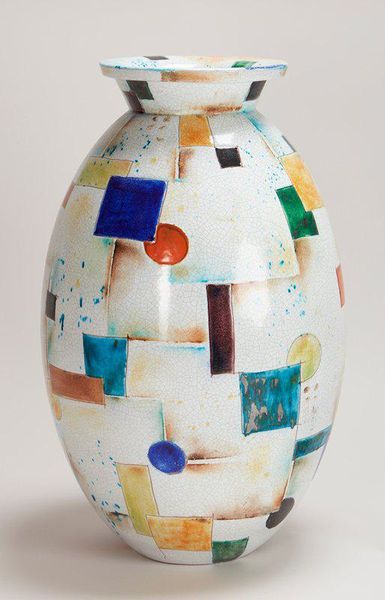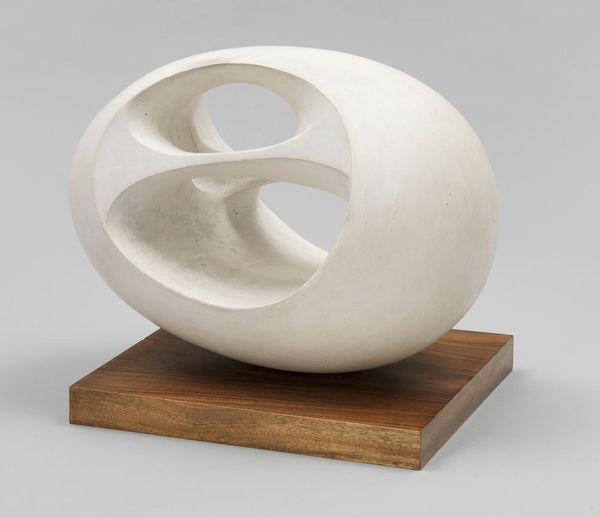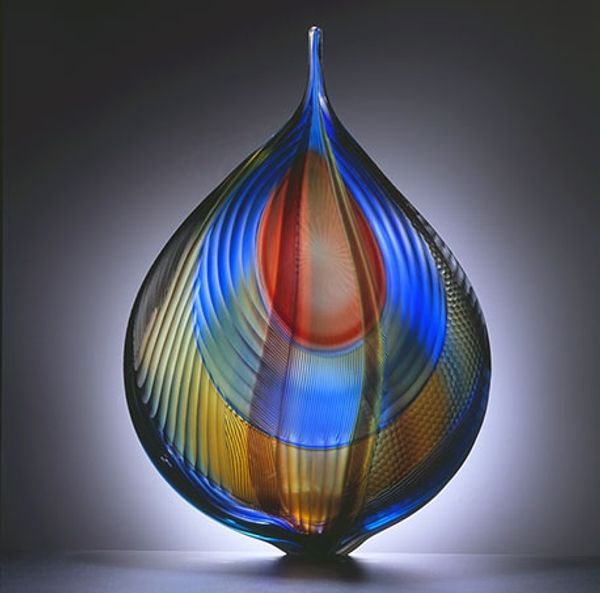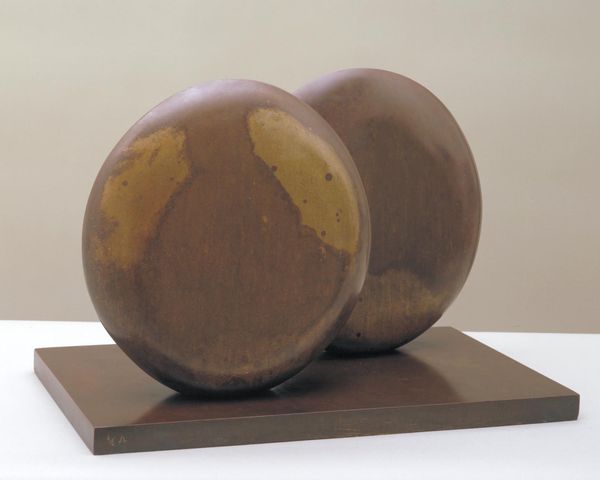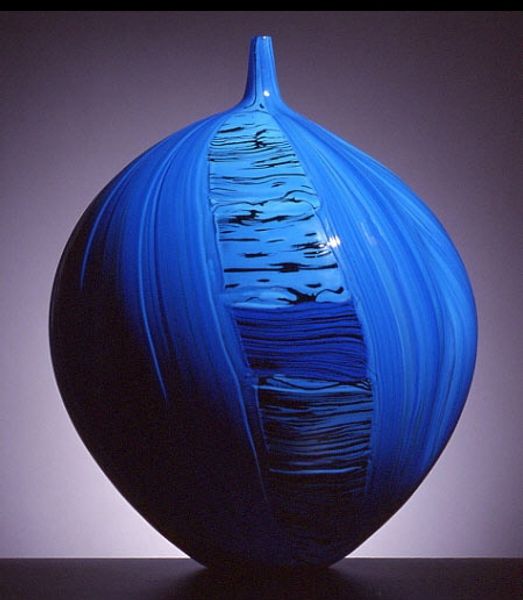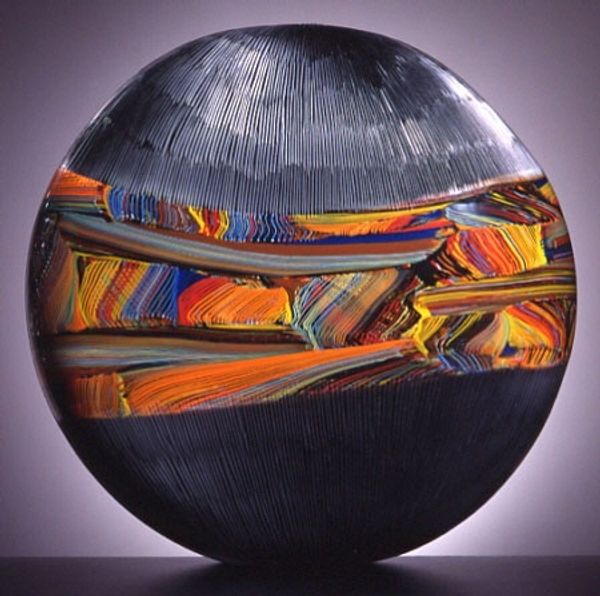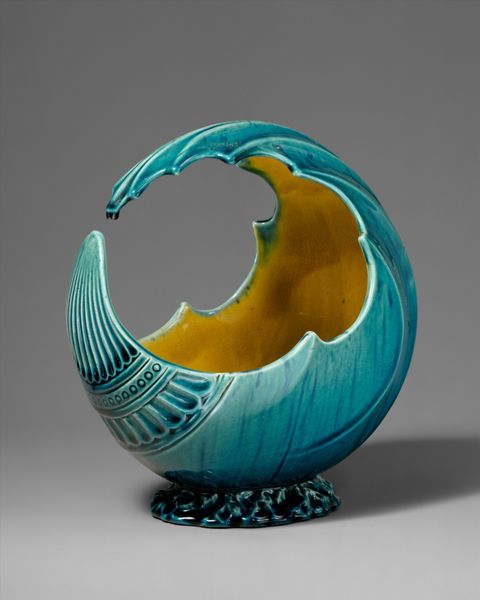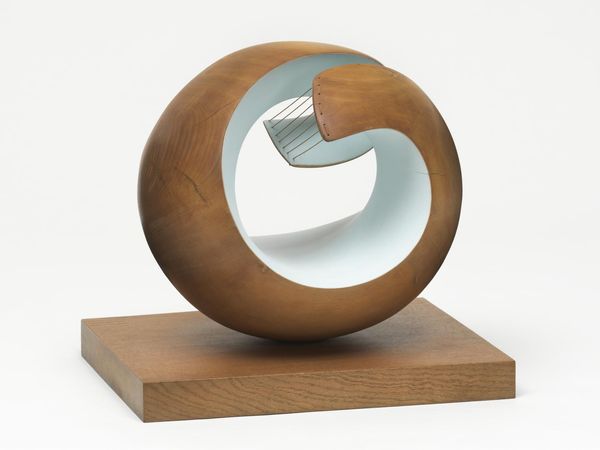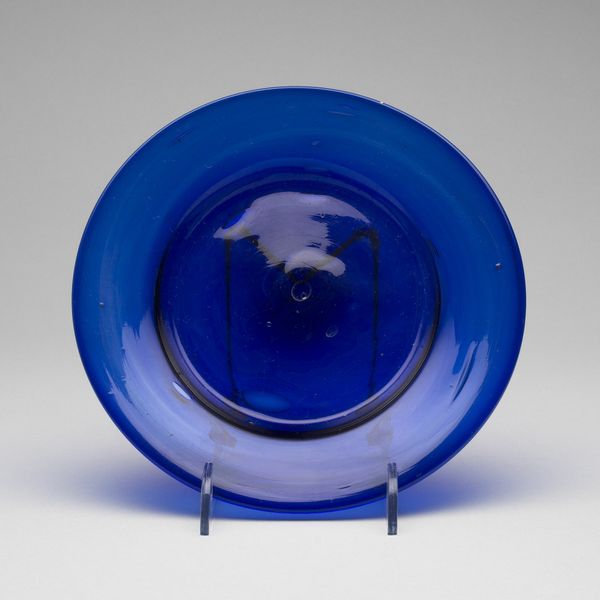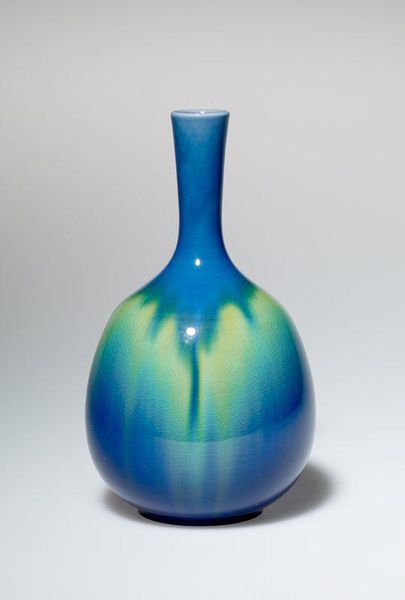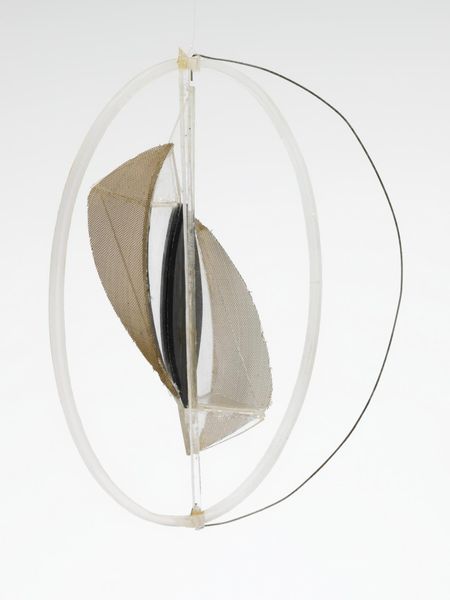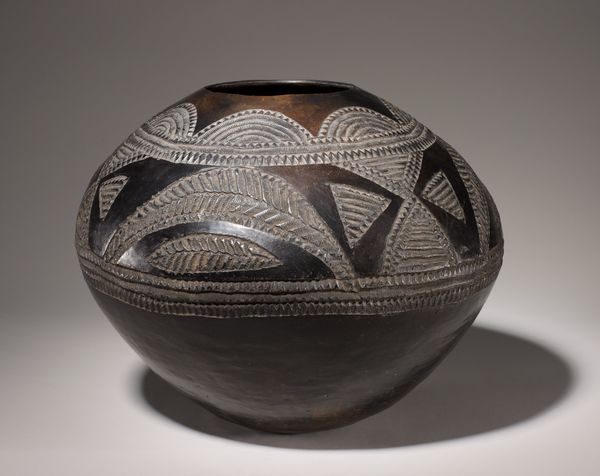
ceramic
#
art-deco
#
ceramic
#
vase
#
form
#
geometric
#
france
#
abstraction
#
line
Dimensions: 12 x 7in. (30.5 x 17.8cm)
Copyright: No Known Copyright
Editor: Here we have "Vase", created around 1925 by Andrée Faué. It's a ceramic piece and currently residing at the Minneapolis Institute of Art. The geometric shapes immediately catch the eye; they create this dance across the vase, which makes the object feel more modern, despite its age. How do you approach this vase, and what aspects of its design do you find most compelling? Curator: The piece is quite intriguing. Focusing purely on form, note the relationship between the curvilinear shape of the vase itself and the contrasting geometric decorations. Observe how Fauré has divided the surface. It seems she used the interplay of contrasting color and shapes—circles, arcs, and implied triangles—to articulate depth and movement on a static object. What purpose do you think is achieved by these tensions? Editor: I think it's exciting that a vase, typically static, is brought to life using these implied lines! Almost as though we are experiencing the piece frame by frame. Can you talk more about the impact color has? Curator: Consider the limited palette. Varying shades of blue and black—how the artist uses a cool monochrome to unify a complex arrangement of shapes. Note, too, the interplay between matte and gloss finishes that enhance the sense of texture, offering another layer of visual interest. Doesn’t this highlight how essential formal choices are to the object's overall aesthetic impact? Editor: Yes, it definitely creates a much more thoughtful piece than simply applying paint to it. It encourages one to investigate each facet, each texture and its contributions. Thanks! I have new ways of seeing an art piece that once would not have interested me as much! Curator: Indeed. Examining purely visual elements reveals a wealth of artistic intention and thoughtful design. Looking at an object this way allows the viewer to form a perspective more nuanced than any contextual explanation could provide.
Comments
No comments
Be the first to comment and join the conversation on the ultimate creative platform.
